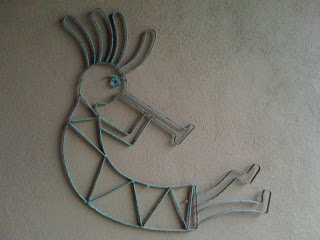
Sunday, March 7, 2010
Mystery or History?

Photographer: Spencer Porter
This metal kokopelli is hanging up on an outside wall at my house. Up until now, I had no idea what the significance of this piece was or where it originated. This is one of the most common characters from Native American cultures that is used as decorative pieces in homes all over the world. The kokopelli figure has several stories and myths related to its origin including a trickster god who represents music.
Subscribe to:
Post Comments (Atom)
I have seen this from somewhere, very unique picture though. I never understood what it was showing but now I do.
ReplyDeleteAndrew Berman
We have these at my house too and I never knew what it was, or what it meant. But now I am interested in finding out what other things around my home mean too.
ReplyDeleteKelsey Esham
This comment has been removed by the author.
ReplyDeleteThis picture really views this global issue on a local basis, because this figure can be found all over Tucson. I have never known what is has meant until now, and it makes me realize how important education can be in understanding other cultures. So many times we make assumptions about culturally significant objects, when in reality we can never really know the importance until we ask.
ReplyDelete-Torre Samuelson